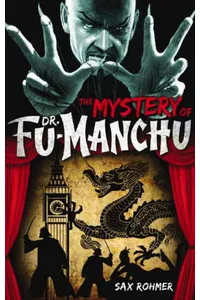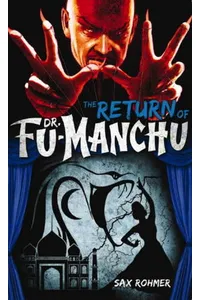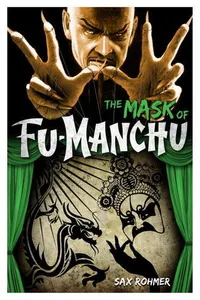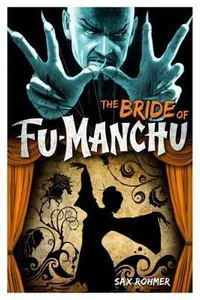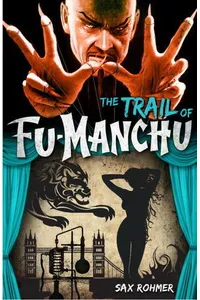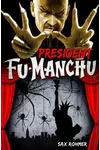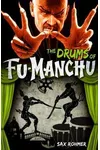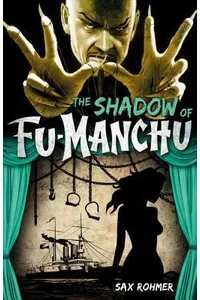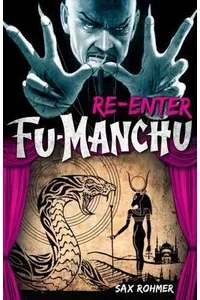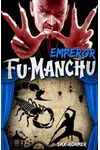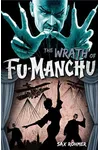Step into the shadowy world of Dr. Fu Manchu, where cunning schemes and exotic dangers lurk around every corner! Created by Sax Rohmer, this thrilling mystery series follows the diabolical Chinese mastermind as he plots global domination, pursued by the relentless Nayland Smith and Dr. Petrie. Blending pulp adventure with early 20th-century intrigue, Fu Manchu’s tales captivate with their breakneck pace and unforgettable villain.
Despite controversy over its racial stereotypes, the series’ gripping narratives and iconic antagonist have left an indelible mark on literature and pop culture. Ready to unravel the mystery of this literary legend? Let’s dive in!
How Fu Manchu Began
Sax Rohmer, born Arthur Henry Ward in 1883, was a British writer with a knack for the dramatic. Before penning novels, he wrote for music halls, weaving tales of the occult and adventure. In 1912, inspired by the era’s fascination with the 'Yellow Peril'—a xenophobic fear of Eastern influence—Rohmer created Dr. Fu Manchu. His first novel, The Mystery of Dr. Fu-Manchu, serialized in magazines, became an instant hit, launching a series that spanned decades.
Rohmer claimed his villain was inspired by real-life Chinese crime figures he encountered as a reporter in London’s Limehouse district, though some say his Ouija board spelled out 'C-H-I-N-A-M-A-N' as his muse! Whatever the spark, Fu Manchu’s blend of genius and menace captured readers’ imaginations, setting the stage for a pulp fiction phenomenon.
The Heart of Fu Manchu
The Fu Manchu series comprises 13 novels, with a posthumous anthology, The Wrath of Fu Manchu. Key titles include The Mystery of Dr. Fu-Manchu (1913), where Nayland Smith and Dr. Petrie chase the villain through London’s opium dens to thwart his assassination plots. The Return of Dr. Fu-Manchu (1916) ups the ante with more fiendish traps, while The Hand of Fu-Manchu (1917) introduces the Si-Fan, a secret society fueling Fu’s schemes. Emperor Fu Manchu (1959), Rohmer’s final novel, sees the villain in China, plotting to disrupt global powers.
Themes of imperialism, cultural clash, and scientific ingenuity run deep. Fu Manchu, a brilliant chemist and strategist, uses arcane methods—venomous creatures, fungi, and dacoits—over modern weapons, reflecting a fascination with the exotic. Set against Edwardian London’s foggy alleys and later global locales, the series’ pulpy style delivers relentless action, though its racial caricatures, rooted in the era’s prejudices, have sparked debate. Yet, Fu’s complex honor code and intellect make him a compelling antihero.
The stories, often serialized, feel like literary cliffhangers, with Nayland Smith and Petrie as a Holmes-Watson duo racing against time. Their dynamic, paired with Fu’s larger-than-life villainy, keeps the pages turning, even if the prose leans on exclamation points!
Why Fu Manchu Resonates
Fu Manchu’s legacy is as enduring as it is polarizing. The series inspired countless adaptations—films with Boris Karloff, comics, radio shows, and even a TV series—cementing Fu as the archetype of the evil genius. His influence echoes in James Bond’s villains and beyond, with his mustache becoming a cultural shorthand. Despite criticism for perpetuating stereotypes, the series’ thrilling escapism and Fu’s magnetic presence continue to draw fans.
Post-World War II, Fu Manchu became a satirical figure, parodied in works like The Goon Show, reflecting shifting cultural attitudes. Modern readers appreciate the series as a historical artifact, valuing its pulp energy while acknowledging its flaws. Fu’s blend of menace and mystique ensures his place in the villain hall of fame.
- First Published: 1912–1913 (serialized)
- Total Books: 13, plus one posthumous anthology
- Key Characters: Dr. Fu Manchu, Nayland Smith, Dr. Petrie, Karamaneh
- Setting: Edwardian London, later global
Dust off The Mystery of Dr. Fu-Manchu and plunge into a world of pulp thrills and sinister plots! Whether you’re a fan of classic mysteries or curious about a literary legend, Fu Manchu’s saga awaits.
